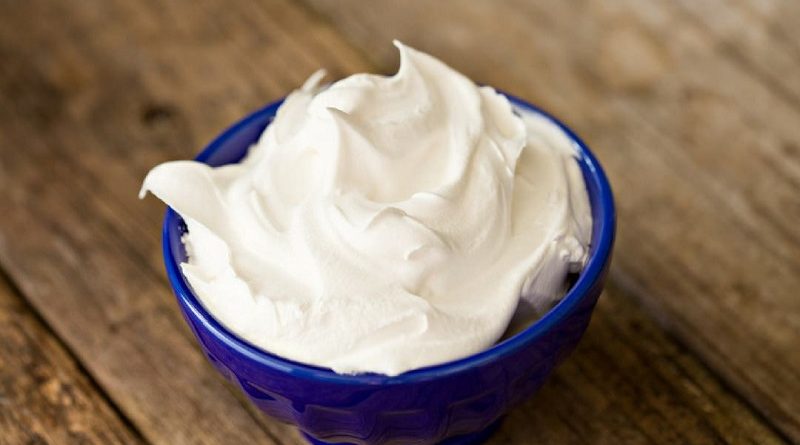Dairy or Non-Dairy: Everything You Need to Know About Dairy-Free Whipping Cream
Have you recently discovered you are lactose or dairy intolerant? Or maybe you have felt unwell lately, so you’ve been advised to cut on dairy? Or you’ve been vegetarian for a while, and now you’re thinking of going vegan? In all of these situations, embracing a dairy-free lifestyle may be the right thing to do to improve your well-being.
Many dietitians and health experts have been talking about the many benefits of the dairy-free diet for years now, and more and more people that have cut dairy claim them. One of the main benefits is weight loss. The removal of the excess saturated milk fats and sugar contributes to a diet low in calories which means healthy weight loss.
Another big perk is less bloating and a flatter stomach. If you’re prone to bloating, constipation or other problems, cutting on dairy can make a significant difference. This is because our gut does not tolerate milk products as they do other food. Switching to dairy-free alternatives can level up your fibre intake, making it easier to ‘go’. It’s proven that dairy causes inflammation, promoting the growth of unwanted bacteria such as candida and others linked to acne and breakouts.
It may feel daunting to convert to a dairy-free diet, especially if you have health problems or love cheese, yoghurt and cream as much as I do. And sometimes, having determination along with the right information in hand isn’t enough. You need to have alternatives to the things you love the most. So, let’s talk cream.
Dairy vs. Dairy-Free Whipping Cream

Heavy cream and whipping cream are two similar dairy options high in fat, with the main difference in fat content, with heavy cream having slightly more fat percentage of 36% compared to the 30-35% of fat in the whipping cream. Manufacturers make them by mixing milk with milk fat for a heavy, seamless fat texture. The fats they contain are primarily saturated fats, which make them not the healthier choice when it comes to using milk products, and must be used in moderation even if you haven’t milk-related health issues. People mostly use heavy creams in soups, creams and salads, while whipping cream is used primarily for coffee and desserts. If it’s hard for you to give up the creamy milk texture, you’re probably asking yourself, is there a non-dairy substitute for cream? There is a solution for you – dairy free whipping cream as a healthy alternative.
What is dairy free whipping cream? Dairy free whipped cream is made of plant milk like soy, coconut and rice, and vegetable oils. The sweetened options contain some kind of sweetener, like erythritol, coconut sugar, guar gum or some kind of flavour. They’re available in several packaging options, such as cartons, cans and spray cans. Some of them are ready to use, like the ones that come in spray cans, and some of them need to be whipped to use them. The already whipped ones are the better option if you use a little cream once in a while, like putting a little cream in your coffee or at the top of your hot chocolate. But if you’re making a dessert and need a bigger amount of cream, you should use ones that need to be whipped.

You need to be careful when buying cream because it’s labelled as dairy-free not non-dairy, as the non-dairy ones may contain skimmed milk. By definition, “non” means “not”, so someone would easily assume that a non-dairy product doesn’t contain dairy. Unfortunately, this isn’t always the case, as a product labelled as non-dairy can contain 0.5% or less milk by weight in the form of milk protein.
The initial idea wasn’t to protect dairy-free consumers but to prevent dairy consumers from mistaking very low-milk, dairy-like foods for dairy products. Often, alternatives that don’t contain any milk are labelled explicitly as dairy-free or vegan, and there are even options that are low in sugar, so look for those when buying your dairy free whipping cream. If you have other allergies and intolerances, some options are gluten, nut and soy-free so everyone can enjoy some plant-based creaminess. And if you don’t prefer a particular taste, like soy or rice, the coconut version makes a good substitute.
Reasons to Buy Dairy-Free Whipping Cream

- Suitable for everyone. Everyone can enjoy the many kinds of dairy free whipped topping, no matter if they’re vegan, have allergies or are looking for a healthier option for a low-fat or low-calorie diet.
- Easy to make. If you use the spray can option, you have to spray your whipped cream into whatever dish you want. And the other option needs to be shortly whipped, and that’s it. You have the best base for your lactose-free and vegan-friendly dessert.
- Cost-effective. Dairy-free whipping creams are often cheaper than dairy ones, as vegetable fats are cheaper than milk ones.
- Perfect for every meal. Since most dairy-free creams are flavourless, they make the ideal base for any meal or dessert. You can use them in your oatmeal at breakfast, put them in your coffee, tea or cocoa drink, and they make a great base and topping for any cake or dessert.
Dairy-Free Whipping Cream Recipes
Non-dairy creams are becoming the better cream option for decorating cakes. Their great composition, ability to withstand average temperatures and sustainability makes them the best choice for making showcase cakes and desserts. Add the healthy benefits and the fact that anyone can indulge in the sweet pleasure of a dairy-free dessert, and you have the recipe for the perfect cake. You have many vegan and dairy-free recipes available online, or you can make your favourite traditional dessert recipe just by switching dairy products with dairy-free alternatives. You can now indulge in any sweet pleasure guilt-free, feeling lighter than ever.

